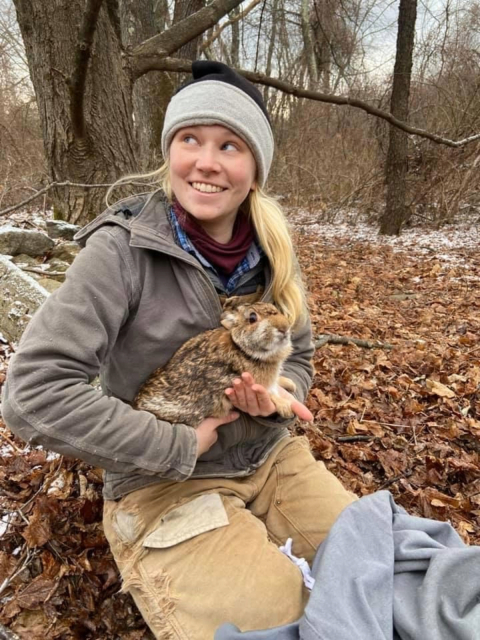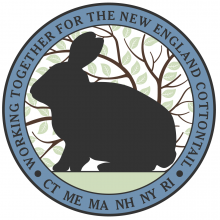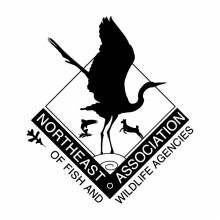State Wildlife Management Area Project
Cranberry Mountain WMA is one of few locations in New York where state-owned lands support a population of New England cottontails. Since 2014, conservationists have been creating and enhancing the young forest and shrubland that these rare native “woods rabbits” need.
Brontosaurus in Action
In 2014, a “brontosaurus” machine chewed down trees on 13 acres, letting in light to spur the growth of low, thick plants, including shrubs that New England cottontails use for feeding, hiding from predators, and taking shelter in winter. A brontosaurus runs on weight-distributing tracks, so it’s less apt to compact the soil or leave damaging ruts. It can creep into an area, then reach out 30 feet on each side with a boom equipped with tooth-studded drum revolving at a high speed, and mulch small trees from the top down.
In the treated area, blueberry and other shrubs grow back densely, along with shoots and saplings of young hardwood trees.
Workers used a “fell and leave” approach on another 22 acres, in which small patches of trees were cut down and allowed to decompose on the ground. A 3-acre patch cut in 2020 also expanded the amount of young forest.
Rabbit Research
Biologists with the State University of New York's College of Environmental Science and Forestry have captured New England cottontails at Cranberry Mountain and outfitted them with radio-collars. They studied how the rabbits use different habitats, interact with predators, and compete with eastern cottontails: introduced, non-native rabbits that also live on the WMA and are common in many other parts of the Northeast. (See photographs of the scientists conducting field studies. Some of their research is explained here.)
The findings have helped conservationists develop a state-specific guide on creating habitat for New England cottontails in New York.
It's Not Just for Rabbits
The new young forest and shrubland on the WMA also provides nesting and feeding cover for American woodcock and ruffed grouse, and foraging habitat for migrating songbirds. Other wildlife benefiting from the fresh habitat include white-tailed deer, black bears, and wild turkeys.
How to Visit
Cranberry Mountain WMA is east of New York Rte. 22. From a parking area off Stagecoach Rd., visitors can hike past a gate into an area of fields and the managed young forest and shrubland.
This webpage has more information. The New York State Department of Environmental Conservation provides a map.




